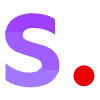Stable Video 3D (SV3D) is a revolutionary generative model that fuels advancements in the field of 3D technology. A product of Stability AI, SV3D draws upon the versatility and foundation of Stable Video Diffusion to offer greatly improved quality and multi-view consistency. The tool operates with a more advanced level of performance compared to its predecessor, Stable Zero123 and other open source alternatives such as Zero123-XL. The SV3D model comes in two variants. The SV3D_u generates orbital videos from single image inputs without camera conditioning, while the SV3D_p boats a higher functionality by accommodating both single images and orbital views, hence enabling the creation of 3D video along specified camera paths. Adapting the Stable Video Diffusion image-to-video diffusion model with the addition of camera path conditioning, the tool is designed to generate multi-view videos of an object. This technique provides major benefits in terms of generalization and view-consistency of generated outputs. Therefore, SV3D can be used to output quality 3D meshes from single image inputs. Both commercial and non-commercial usage is supported. The model weights are downloadable on Hugging Face and a research paper is available for detailed understanding. Stable Video 3D also introduces significant advancements in novel view synthesis (NVS) and 3D generation, delivering coherent views from any given angle with proficient generalization.

Description
Get to know the latest in AI
Join 2300+ other AI enthusiasts, developers and founders.
Thank you!
You have successfully joined our subscriber list.
Add Review
Pros
3D video creation
Accommodates specified camera paths
Active online presence on various platforms
Advancements in 3D generation
Availability of Stable Video 3D resources online
Can be used commercially
Continue quality improvements over predecessors
Delivers coherent views
Disentangled illumination model
Documented in a research paper
Downloadable research paper for deeper understanding
Enables the creation of arbitrary orbits
Enhances realistic and accurate 3D generation
Ensures consistent object appearance
Flexible application (single images to video)
Generates orbital videos
Image-to-video diffusion model diffuseness
Improved 3D mesh qualities
Improved quality output
Improves novel view synthesis
Increased 3D quality in non-visible regions
Inputs: single or orbital images
Joint optimization of 3D shape and texture
Masked score distillation sampling loss
Membership for commercial use available
Model weights available for download
Model weights downloadable on Hugging Face
More detailed and faithful outputs
Offers detailed technical reports
Offers enhanced pose-controllability
Offers multi-view consistency
Optimized 3D Neural Radiance Fields
Outperforms similar open source alternatives
Outputs are view-consistent
Outputs quality 3D meshes
Proficient generalization
Provides major benefits in generalization
Reduces baked-in lighting issues
Stable Video Diffusion
Suitable for any given angle
Superior multi-view consistency compared to competitors
Supports non-commercial use
Supports single image inputs
Two distinct versions (SV3D_u and SV3D_p)
Two variants for functionalities
Video with specified camera paths
Accommodates specified camera paths
Active online presence on various platforms
Advancements in 3D generation
Availability of Stable Video 3D resources online
Can be used commercially
Continue quality improvements over predecessors
Delivers coherent views
Disentangled illumination model
Documented in a research paper
Downloadable research paper for deeper understanding
Enables the creation of arbitrary orbits
Enhances realistic and accurate 3D generation
Ensures consistent object appearance
Flexible application (single images to video)
Generates orbital videos
Image-to-video diffusion model diffuseness
Improved 3D mesh qualities
Improved quality output
Improves novel view synthesis
Increased 3D quality in non-visible regions
Inputs: single or orbital images
Joint optimization of 3D shape and texture
Masked score distillation sampling loss
Membership for commercial use available
Model weights available for download
Model weights downloadable on Hugging Face
More detailed and faithful outputs
Offers detailed technical reports
Offers enhanced pose-controllability
Offers multi-view consistency
Optimized 3D Neural Radiance Fields
Outperforms similar open source alternatives
Outputs are view-consistent
Outputs quality 3D meshes
Proficient generalization
Provides major benefits in generalization
Reduces baked-in lighting issues
Stable Video Diffusion
Suitable for any given angle
Superior multi-view consistency compared to competitors
Supports non-commercial use
Supports single image inputs
Two distinct versions (SV3D_u and SV3D_p)
Two variants for functionalities
Video with specified camera paths
Cons
Dependency on 3D meshes
Dependent on camera conditioning
Diffusion model complexities
Need for downloaded model weights
Potential baked-in lighting issue
Reliance on Hugging Face
Requires single image input
Separate use for commercial/non-commercial
Two variant complexity
Dependent on camera conditioning
Diffusion model complexities
Need for downloaded model weights
Potential baked-in lighting issue
Reliance on Hugging Face
Requires single image input
Separate use for commercial/non-commercial
Two variant complexity
Alternatives
Promote Your AI Tool
Get seen by thousands of AI enthusiasts, founders & developers.
- Homepage, Search and Sidebar Ads
- Featured Placements
- Click Stats & more
AI News








Leave a Reply